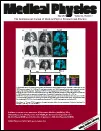Hans-Peter Wieser, Eduardo Cisternas, Niklas Wahl, Silke Ulrich, Alexander Stadler, Henning Mescher, Lucas-Raphael Müller, Thomas Klinge, Hubert Gabrys, Lucas Burigo, Andrea Mariani, Swantje Ecker, Benjamin Ackermann, Malte Ellerbrock, Katia Parodi, Oliver Jäkel and Mark Bangert
Medical Physics, 2017 Apr 1. doi: 10.1002/mp.12251
Publication year: 2017
Abstract
Purpose
We report on the development of the open-source cross-platform radiation treatment planning toolkit matRad and its comparison against validated treatment planning systems. The toolkit enables three-dimensional intensity-modulated radiation therapy treatment planning for photons, scanned protons and scanned carbon ions.
Methods
matRad is entirely written in Matlab and is freely available online. It re-implements well-established algorithms employing a modular and sequential software design to model the entire treatment planning workflow. It comprises core functionalities to import DICOM data, to calculate and optimize dose as well as a graphical user interface for visualization. matRad dose calculation algorithms (for carbon ions this also includes the computation of the relative biological effect) are compared against dose calculation results originating from clinically approved treatment planning systems.
Results
We observe three-dimensional γ-analysis pass rates ≥ 99.67% for all three radiation modalities utilizing a distance to agreement of 2 mm and a dose difference criterion of 2%. The computational efficiency of matRad is evaluated in a treatment planning study considering three different treatment scenarios for every radiation modality. For photons, we measure total run times of 145 s–1260 s for dose calculation and fluence optimization combined considering 4–72 beam orientations and 2608–13597 beamlets. For charged particles, we measure total run times of 63 s–993 s for dose calculation and fluence optimization combined considering 9963–45574 pencil beams. Using a CT and dose grid resolution of 0.3 cm3 requires a memory consumption of 1.59 GB–9.07 GB and 0.29 GB–17.94 GB for photons and charged particles, respectively.
Conclusion
The dosimetric accuracy, computational performance and open-source character of matRad encourages a future application of matRad for both educational and research purposes.
Keywords
- DICOM.
- Dose calculation.
- Inverse planning.
- Optimization.
- Radiation therapy.

